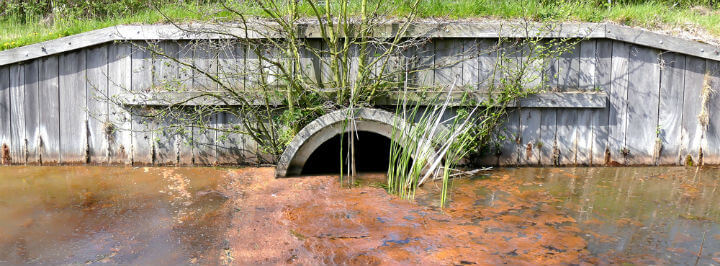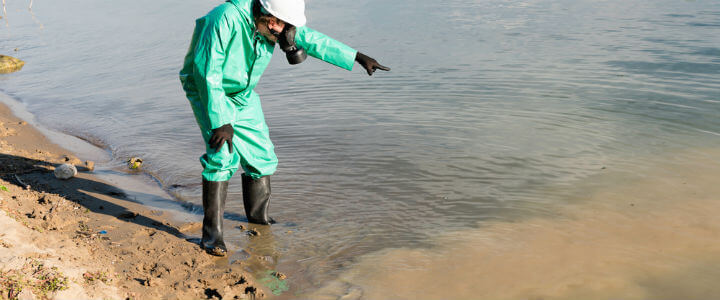What is Surface Water Pollution? – Sources and Effects
Written by AOS Treatment Solutions on November 6, 2018

Surface water contamination is a significant problem for municipal authorities. It can lead to pollution on a large scale and be a cause of major illness in humans. Knowing how to recognize it, minimize its occurrence, and treat the problem effectively is vital to maintaining a safe water supply.
What is Surface Water Pollution?
Water from lakes and rivers that are used by municipalities, agriculture, and industry, is increasingly exposed to pollutants from manufacturing or the environment.
Fertilizers can leak into rivers, and flooding leads to pollution of surface water as the volume spreads across areas that are normally not exposed to water. These contaminants are why water must be treated before being used for human consumption.
Even though water appears to be clear, it may not be clean, which is why municipal authorities need a program of testing and treatment for potential contamination.
Sources of Surface Water Pollution

How can surface water become contaminated? One of the most common sources of surface water pollution is human waste, especially in developing countries.
In addition to human waste, there are issues with fertilizer seepage from farmland into groundwater. Industrial plants are also known to contaminate surface water with byproducts leaking into rivers and drainage systems.
Poorly maintained waste systems and adverse weather incidents such as flooding are also major sources of surface water pollution. For a municipal authority, knowing the risks in the area and what to do about it is critical.
The sources of surface water contamination are many. Having municipal surface water treatment services available is vital to community health, as treatment specialists have the expertise to analyze and treat the problem efficiently and effectively.
Pathogens in Surface Water Pollution
One of the biggest risks to humans from surface water pollution are pathogens that cause types of waterborne diseases. These come from human waste, as well as industrial sources which include organic chemicals and heavy metals.
Contamination most commonly occurs when food is prepared using contaminated water or by a person drinking it. This is a common cause of illness, particularly in developing countries.
Surface water contamination can also lead to toxic products remaining in fish because of exposure to pathogens. Municipal water suppliers need to access the expertise of surface water treatment services to diagnose and treat the problem before it becomes a major hazard to health.
Color and Turbidity

The color and turbidity of the water are affected when there is contamination. Typically, tannins are formed from organic material and include branches, soil, fish, debris and more.
The type of tannin will depend on the location and nature of the contamination. Some are difficult to see so having regular checks of the water supply is important.
Turbidity occurs when there are sediments in the water which typically settle or cloud the appearance of the liquid. This is not necessarily harmful. Turbidity is more common in surface water as it lacks the natural filtration found in groundwater. Working with a municipal water treatment expert like AOS to address the problem will improve the quality of the supply.
A municipal authority should use the expertise of water treatment services to maintain a safe water supply and reduce the risk of contamination. Surface water is exposed to several contaminants, depending on the location so regular inspections and treatments will improve quality.
Contact AOS today for more information about our water and wastewater treatment solutions.

